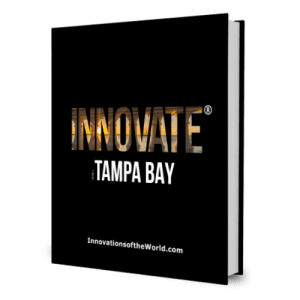Mobility or the ability to move around freely is at the heart of personal liberty. As Director of the City of Tampa’s Mobility department I have the privilege of overseeing many aspects of this essential function of civilization. In the context of mobility the challenges of our times manifest themselves as crashes, congestion and effects of climate change. Over the last 150 years or so, we’ve fundamentally used the same technologies to move people and goods. It’s time to bring innovation to mobility. I
understand innovation as the use of new ideas or methods to address the challenges of our times. While new technologies like Hyperloop are still being developed it is clear that the use of new methods using existing technology will be more critical to addressing our imminent challenges.
Furthermore, the future of innovation in mobility lies in moving away from developing specialized solutions and towards a broader approach of addressing multiple challenges simultaneously. Mobility, social justice, equity, health, housing affordability, economic competitiveness, resilience and clean air are irrevocably linked and impact a community’s quality of life. Some best practices for communities to consider:
Think Regional – It is imperative that leaders of stakeholder organizations fully understand and support the commitment required at a regional level to address our challenges. Entire metropolitan statistical areas (MSAs) operate as a single organism, solutions to address their challenges must be collective.
Clear Benefits Narrative – A clear benefits narrative is critical to garner support and clarify the ‘why’.
Community-First Mindset – This simply means listen to the community early and maintain a laser focus on community needs while designing a policy or solution. This could be through direct interaction with community members or the use of technology tools. Smart cities provide unique opportunities to leverage crowd-sourced data to deliver community-driven solutions. For example, mobility apps that provide trip-planning tools and connectivity to different travel modes can continuously learn from users’ travel choices to deliver better services.
Public Private Partnerships (P3) – Private partners are better suited to operate complex technology solutions. Also, given tight budgets and depleting revenue sources (think gas tax) it is essential to look for opportunities to sustainably finance and operate these systems through public private partnerships. And there are plenty of opportunities. Large corporations have set up global partnerships with banks to fund mobility solutions like mass transit. It’s likely that a commitment to public private partnerships may be a necessary condition to realizing a community’s goals.
Culture of Innovation – It is critical to foster a culture of creative thinking and extracting social and economic value from new methods. Universities and research centers are great partners to leverage this approach. A culture of innovation also accepts and recognizes that not all ideas will succeed and remains committed to the process.
Vulnerable Populations – Vulnerable populations include the homeless, senior citizens, low income groups, persons with disabilities, veterans, etc. Innovation is necessary to address historical and current challenges with equity, social justice and broader opportunity.
Be Bold, Think Transformation– Be bold when planning, our challenges require transformation rather than just transition.
The ideas expressed above are a result of the City of Tampa’s journey towards developing Transforming Tampa’s Tomorrow (T3), Mayor Jane Castor’s signature strategy to address our challenges including Mobility, Housing Affordability, Equitable Services, Smart Development and Sustainability & Resilience. Our rapid growth, community, weather, cost of living, innovation ecosystem and collaborative culture make Tampa the ideal environment for innovators.














